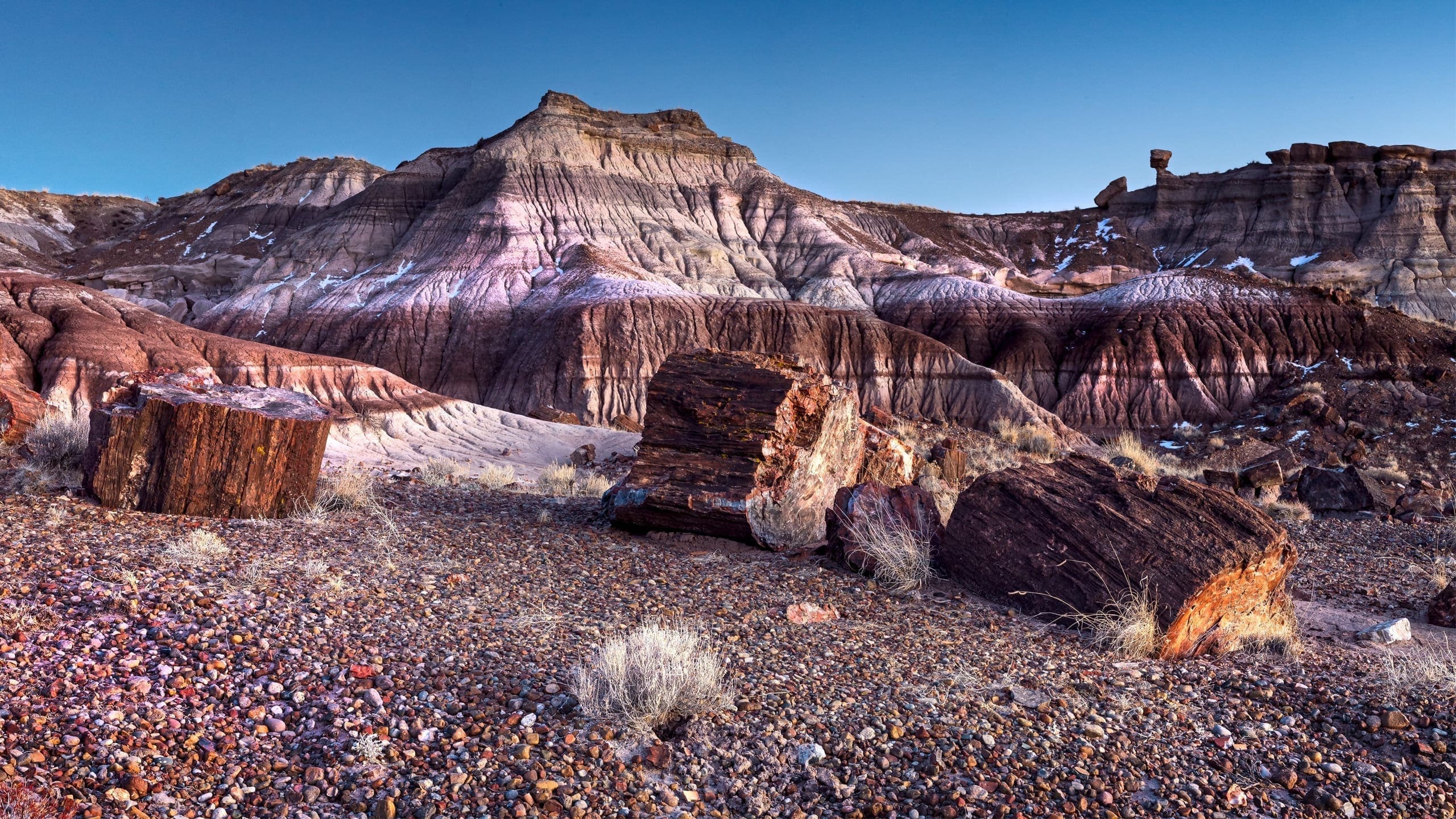About Petrified Forest National Park
Petrified Forest National Park, in a remote area of northeastern Arizona, contains one of the largest and most colorful concentrations of petrified wood in the world (some petrified logs of ancient conifer species measure more than 190 feet). The park is renowned for its multihued badlands of the Chinle Formation that are part of the Painted Desert of Arizona. The Puerco River Valley and the Rainbow Forest are also among the park’s distinctive geographic areas.
Initially proclaimed a national monument in 1906 by President Theodore Roosevelt, Petrified Forest was redesignated as a national park in 1962. In 1970 Congress designated more than 50,000 acres in the park as one of the first NPS wilderness areas. Passage of the 2004 Petrified Forest National Park Expansion Act increased the authorized park boundary by approximately 125,000 acres.
The park’s remarkable geological formations (the Late Triassic Chinle Formation and the more recent Late Miocene / Early Pliocene Bidahochi Formation) contain fossilized evidence of ancient environments within sedimentary rock layers. The colorful badland hills, flat-topped mesas, and sculptured buttes of the Painted Desert are primarily made up of Chinle Formation deposits formed by fluvial (riverrelated) processes occurring between 225 and 205 million years ago. The dramatic setting of mesa cliffs and escarpment rimrock is a result of the geologic processes of uplift and erosion, with resistant sandstone and lava caprock overlying more easily eroded layers of clay and shale.
In stark contrast to the high, arid grassland environment that characterizes the park today, the humid tropical climate that existed during the Late Triassic supported dense vegetation, giant reptiles and amphibians, early dinosaurs, fish, and many invertebrates. The landscape was then dominated by the winding waterways of a vast river system. More than 700 paleontological sites have been identified in the park, and it is possible to learn more about the Late Triassic here than anywhere else in North America.
The park also contains a wide range of significant cultural resources that document thousands of years of human history. More than 1,000 American Indian prehistoric sites have been recorded in the park including small campsites, lithic and ceramic scatters, pictographs and petroglyphs, house structures and large pueblo sites. Traces of historic trails used by explorers, wagon trains, and even an experimental US Army camel train provide evidence of Euro-American explorations. For the Hopi Tribe, the Pueblo of Zuni, the Navajo Nation, and other contemporary tribes, the park contains places and resources that connect them to their cultural heritage.
Historic buildings and structures include the Painted Desert Inn at the edge of the Painted Desert, a Pueblo Revival structure and national historic landmark. The national register-listed Rainbow Forest Historic District, with buildings constructed primarily by the Civilian Conservation Corps during the early 1930s, served as an early visitor contact area and headquarters for the park. The Painted Desert Community Complex (the main park headquarters area) was one of the most ambitious projects of the NPS Mission 66 development program (1956–1966); the historic district is listed in the national register and is under consideration for national historic landmark designation.
Visitors to the park have multiple opportunities to experience immense vistas and colorful landscapes that showcase the dynamic interplay of light and shadow on geologic formations. The 28-mile park road offers overlooks with long-distance vistas of the Painted Desert and access to hiking trails, picnic areas, and the designated wilderness.
Source: Foundation Document Overview – Petrified Forest National Park
Did you know that Petrified Forest is perfect for exploration and discovery? While the park has all the wonders known for a century, there are many new adventures and discoveries to share. There are backcountry hikes into areas never open before such as Red Basin. There are new exhibits that bring the stories to life. Come rediscover Petrified Forest! | Petrified Forest National Park | Arizona | https://www.nps.gov/pefo/index.htm
Fast Facts:
| Date the Park was Established: | December 9, 1962 |
| Park Area (as of 2019): | 221,390.21 acres (895.9 km2) |
| Recreational Visitors (2018 Total): | 644,922 visitors |

